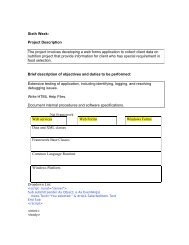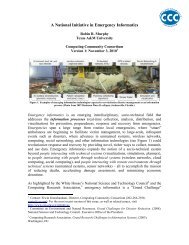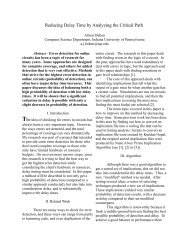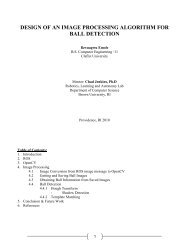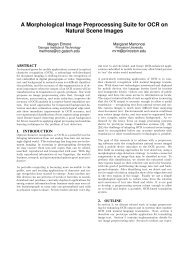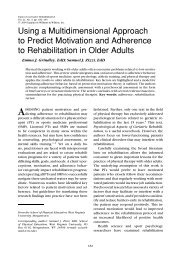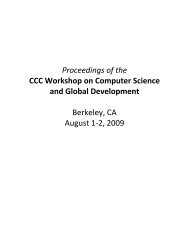High Performance Microchip Supply - Under Secretary of Defense ...
High Performance Microchip Supply - Under Secretary of Defense ...
High Performance Microchip Supply - Under Secretary of Defense ...
Create successful ePaper yourself
Turn your PDF publications into a flip-book with our unique Google optimized e-Paper software.
INTRODUCTION _______________________________________________________________<br />
millimeter-wave circuits and special sensor requirements, to name<br />
but a few, lie outside widely available commercial industrial<br />
capabilities. 14<br />
FOREIGN DEPENDENCE RISKS<br />
Beyond the threat <strong>of</strong> IC device compromise described above,<br />
dependence on <strong>of</strong>f-shore or foreign-owned semiconductor<br />
components subjects the United States to the risk that several<br />
circumstances, such as quick response or surge capacity in time <strong>of</strong><br />
war, could threaten its access to state-<strong>of</strong>-the-art microelectronics.<br />
Some <strong>of</strong> these risks are a result <strong>of</strong> the concentration <strong>of</strong> the foundry<br />
industry into a few Far Eastern countries.<br />
Political/Geographic Dislocations<br />
In September 1999, an earthquake measuring 7.6 on the Richter<br />
scale hit Taiwan, shutting down all factories in Hsinchu, the national<br />
wafer fabrication center. Fortunately, these plants were restarted in a<br />
matter <strong>of</strong> weeks; however, a temblor that seriously damaged<br />
Taiwan’s wafer capacity would have started a worldwide run on<br />
commercial wafer capacity that would have taken years to rectify.<br />
During such a time, DOD and its contractors would have little<br />
leverage to obtain needed fabrication services.<br />
A major armed confrontation between Taiwan and China over the<br />
Straits <strong>of</strong> Taiwan would have similar consequences.<br />
As additional capacity moves to potential adversary countries, the<br />
United States is vulnerable to a governmental “reverse-ITAR” 15 by<br />
which critical technologies are denied to the United States in<br />
international trade. In the late 1980s, the Japanese denied leadingedge<br />
semiconductor manufacturing tools to U.S. manufacturers,<br />
resulting in the need for SEMATECH, a rush joint effort by DARPA<br />
14. Critical Assessment <strong>of</strong> Technologies, DOD Advisory Group on Electron Devices, 2002.<br />
15. International Traffic in Arms Regulations (ITAR) is the set <strong>of</strong> procedures used by the<br />
United States to restrict international shipment <strong>of</strong> arms and defense-related technology.<br />
24 _________________________________________________________ DSB TASK FORCE ON



